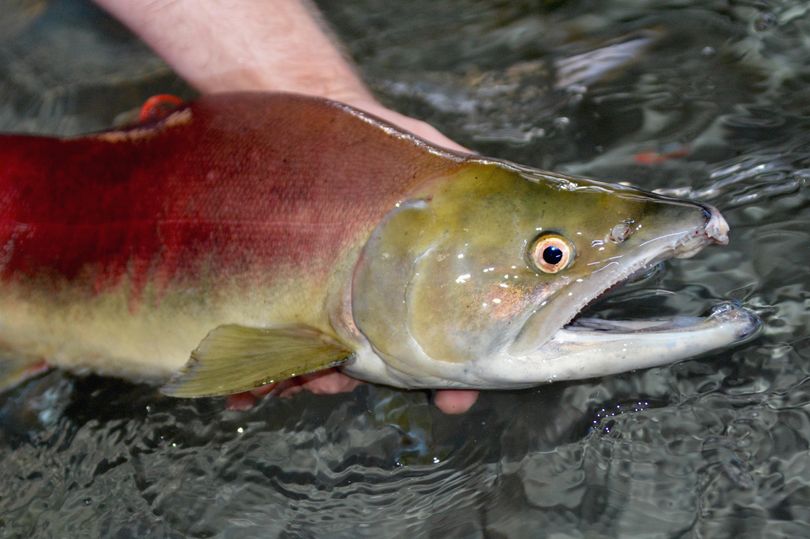Hatcheries give Idaho sockeyes reprieve despite low returns

FISHING -- While Washington fish managers are still evaluating the impacts of poor Columbia River sockeye spawning numbers this season, Idaho is upbeat.
Despite the smallest return of Snake River adult sockeye salmon since 2007, Idaho Department of Fish and Game reports the Eagle Fish Hatchery will likely produce a record number of young sockeye to migrate to the ocean.
“We took more eggs than we ever have for the program,” said Dan Baker, Eagle Hatchery manager.
With spawning of wild fish and “captive broodstock” complete, Fish and Game and NOAA fisheries crews processed and fertilized more than a million eggs, which should produce about 750,000 young fish that will be released in May of 2017.
Here's more info form IDFG:
Adult sockeye returning to Idaho last summer had a difficult and perilous trip when a heat wave in June stopped their upstream migration. That prompted Fish and Game personnel to trap and truck 51 fish from the Snake River to Eagle to ensure the department had some “anadromous” fish that completed the full lifecycle of migrating to the ocean as juveniles and returning as adults.
Summer conditions remained difficult for sockeye due to warm water. Another 56 adults eventually made it back to their homewaters in the Sawtooth Basin, which was only about 10 percent of those that crossed Lower Granite Dam about 30 miles downstream from Lewiston.
“About half the anadromous fish we had in the spawning program this year we trapped and hauled from the Snake River,” Baker said.
Adding to the trapped fish and natural returners were 800 fish, including 390 females, raised entirely in captivity to ensure eggs are available to produce the next generation of Idaho sockeye, which is the southern-most sockeye population in the world and migrates about 900 miles between Idaho’s mountains and the Pacific Ocean.
The 800 captive fish were critical this year when most sockeye returning from the ocean died before reaching their natural spawning grounds.
“That’s the reason we have them,” Baker said. “It’s natural you’re going to have good and bad years for migration conditions.”
Sockeye are Idaho’s most endangered fish, and Fish and Game biologists and technicians go to great lengths while spawning them at the hatchery.
“We take a lot more steps than other hatcheries,” Baker said.
Fish are spawned under stringent guidelines to reduce the chance of disease or contamination. With such a small population, Fish and Game biologists know the family history of individual sockeye. The eggs from each female is divided into two batches and fertilized by different males.
“We don’t want to have any inbreeding, or minimize it as much as possible,” Baker said.
Fertilized eggs are kept at the Eagle Hatchery for about a month while they are at their most fragile stage, and then shipped to a dedicated sockeye hatchery in Springfield.
Another batch of sockeye eggs was produced by fish in Washington’s Burley Creek Hatchery, which is operated by NOAA Fisheries. They are held separately to prevent a catastrophic accident from wiping out an entire generation of captive-raised fish.
The million-plus eggs collected will hatch into tiny sockeye “fry” this spring at Fish and Game’s Springfield Hatchery. With expected attrition, there will be about 750,000 raised to juvenile “smolts” over the next 18 months before they’re released in the Sawtooth Basin near Stanley. The smolts will migrate to the Pacific with their cousins that were naturally born in Redfish and Petit Lakes, and hopefully return in about two years.
While this year’s adult return was the smallest since 2007, it’s still a vast improvement from years of single-digit returns in the 1990s and early 2000s, which included “Lonesome Larry” in 1992 - the only sockeye that returned.
“I think each year we’re gaining some traction,” Baker said. “We’ve come a long ways since Lonesome Larry.”
See a video (below) of IFG hatchery staff spawning endangered Snake River sockeyes.